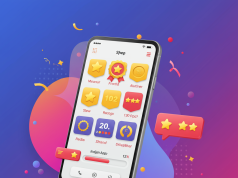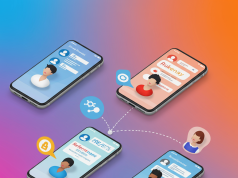Harnessing Influencer Marketing to Skyrocket Your Mobile App Downloads
In today’s crowded app marketplace, standing out requires more than traditional ads. Influencer marketing has emerged as a powerful channel to connect with engaged audiences, build trust, and drive downloads. In this comprehensive guide, we explore why influencer marketing works for mobile apps, how to plan and execute campaigns, measure performance, and avoid common mistakes. Whether you’re launching a new app or aiming to boost active users, these proven strategies will help you leverage influencers effectively.
What Is Influencer Marketing?
Influencer marketing involves partnering with individuals who have established credibility and a dedicated following on social media, blogs, or other online platforms. These influencers create authentic content that promotes your app to an audience likely to be interested in your solution. Unlike paid ads, influencer endorsements feel more like personal recommendations, which can significantly improve trust and conversion rates.
Why Influencer Marketing Works for Mobile Apps
1. Targeted Reach: Influencers cater to niche communities—gaming enthusiasts, fitness buffs, finance followers—allowing you to reach high-intent users. 2. Social Proof: A recommendation from a trusted influencer carries authority and reduces perceived risk. 3. Engagement: Influencer content (stories, reels, live streams) often sees higher engagement than branded posts. 4. Cost Efficiency: Micro-influencers with smaller but loyal followings can deliver excellent ROI compared to broad ad buys.
Types of Influencers and How to Choose
Influencers are typically categorized by audience size:
- Mega-Influencers (1M+ followers): Vast reach but high fees and lower engagement rates.
- Macro-Influencers (100K–1M followers): Broad audiences, moderate rates, suitable for mainstream apps.
- Micro-Influencers (10K–100K followers): Niche communities, high engagement, cost-effective.
- Nano-Influencers (1K–10K followers): Hyper-local or specialized, strongest personal connections.
Choose based on your budget, target audience, and content style. For a new app, combining micro and nano influencers often delivers the best balance of cost and authenticity.
Planning Your Influencer Campaign
1. Define Goals and KPIs: Are you seeking installs, in-app purchases, or brand awareness? Set measurable targets like Cost Per Install (CPI), click-through rate, or engagement rate. 2. Audience Research: Use analytics tools to understand where your potential users spend time—Instagram, TikTok, YouTube, or niche forums. 3. Budget Allocation: Allocate budgets to influencer fees, creative development, tracking tools, and ad amplification if needed. 4. Creative Brief: Provide influencers with key messaging, brand guidelines, and campaign hashtags, but allow creative freedom to maintain authenticity.
Outreach and Negotiation Strategies
Start outreach by sending personalized messages that highlight mutual benefits. Follow these best practices:
- Be concise about your app, audience size, and campaign timeline.
- Offer value beyond payment, such as exclusive access or affiliate commissions.
- Negotiate deliverables: number of posts, content format (video, carousel, stories), and usage rights.
- Draft a simple contract covering timelines, approval processes, and FTC compliance for disclosures.
Clear communication prevents misunderstandings and builds long-term partnerships.
Measuring Success: Metrics and Analytics
Track performance using a combination of platform insights and mobile attribution tools. Key metrics include:
- Impressions and Reach: Understand potential audience size.
- Engagement Rate: Likes, comments, shares reflect content resonance.
- Click-Through Rate (CTR): Percentage clicking your app store link or landing page.
- Installs and Cost Per Install (CPI): Core user-acquisition measures.
- Retention and LTV: Track quality of users acquired through influencers.
Use UTM parameters, deep links, and mobile attribution SDKs (Adjust, AppsFlyer) to tie installs back to specific posts and influencers.
Compliance and Best Practices
Maintain transparency by ensuring influencers disclose partnerships according to FTC guidelines (use #ad or #sponsored). Provide them with branded assets, but avoid strict scripts—authenticity drives engagement. Respect each platform’s policies on promotions and contests if you plan giveaways or code redemption campaigns.
Case Study: From Zero to 50K Installs in 30 Days
A fitness app partnered with ten micro-influencers in the health niche for a launch campaign. Each created a 60-second workout demo using the app, shared custom discount codes, and tagged the brand. The campaign ran for four weeks with a combined budget of $8,000. Results: 52,000 installs, $4.50 average CPI, 35% discount code redemption, and a 20% one-week retention rate. Key takeaway: Niche authenticity and exclusive offers drive high-quality installs.
Common Pitfalls and How to Avoid Them
1. Overreliance on Follower Count: High reach doesn’t guarantee engaged users. Check engagement rates and audience demographics. 2. Ignoring Long-Term Relationships: One-off campaigns miss out on compounding brand affinity. Build ongoing partnerships. 3. Lack of Clear Briefs: Vague guidance leads to off-brand content. Provide examples, key messages, and brand voice. 4. Skipping Performance Reviews: Regularly analyze data and optimize mid-campaign to improve ROI.
Conclusion: Making Influencer Marketing Work for You
Influencer marketing can be a game-changer for mobile app growth when executed strategically. Start by defining clear goals, researching the right influencers, and establishing transparent processes. Monitor relevant metrics to refine your approach, and invest in long-term relationships for sustained success. By weaving authentic endorsements into your broader user-acquisition mix, you’ll tap into engaged communities, boost downloads, and build a loyal user base for your app.
Frequently Asked Questions
1. What budget do I need for an influencer campaign?
Budgets vary widely. Micro-influencers may charge $100–$500 per post, while macro-influencers demand thousands. Start small to test ROIs before scaling.
2. How do I track installs from influencer posts?
Use UTM-tagged landing pages, deep links, and mobile attribution SDKs to attribute clicks and installs back to each influencer.
3. Should I work with multiple influencers at once?
Yes. A diversified influencer mix—nano, micro, macro—helps you reach different segments and reduces risk if one partnership underperforms.
4. How long should a typical influencer campaign run?
Campaigns of 2–6 weeks allow for content sequencing (teasers, launches, follow-ups) and give time to optimize based on early results.
5. Can I repurpose influencer content for ads?
Yes, with usage rights secured. Influencer-generated videos and images often outperform generic ad creatives due to their authentic feel.




